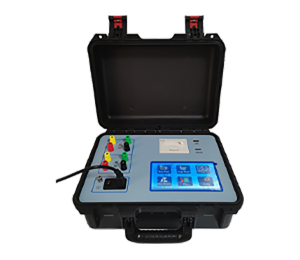 English
English



-
 Afrikaans
Afrikaans -
 Albanian
Albanian -
 Amharic
Amharic -
 Arabic
Arabic -
 Armenian
Armenian -
 Azerbaijani
Azerbaijani -
 Basque
Basque -
 Belarusian
Belarusian -
 Bengali
Bengali -
 Bosnian
Bosnian -
 Bulgarian
Bulgarian -
 Catalan
Catalan -
 Cebuano
Cebuano -
 China
China -
 China (Taiwan)
China (Taiwan) -
 Corsican
Corsican -
 Croatian
Croatian -
 Czech
Czech -
 Danish
Danish -
 Dutch
Dutch -
 English
English -
 Esperanto
Esperanto -
 Estonian
Estonian -
 Finnish
Finnish -
 French
French -
 Frisian
Frisian -
 Galician
Galician -
 Georgian
Georgian -
 German
German -
 Greek
Greek -
 Gujarati
Gujarati -
 Haitian Creole
Haitian Creole -
 hausa
hausa -
 hawaiian
hawaiian -
 Hebrew
Hebrew -
 Hindi
Hindi -
 Miao
Miao -
 Hungarian
Hungarian -
 Icelandic
Icelandic -
 igbo
igbo -
 Indonesian
Indonesian -
 irish
irish -
 Italian
Italian -
 Japanese
Japanese -
 Javanese
Javanese -
 Kannada
Kannada -
 kazakh
kazakh -
 Khmer
Khmer -
 Rwandese
Rwandese -
 Korean
Korean -
 Kurdish
Kurdish -
 Kyrgyz
Kyrgyz -
 Lao
Lao -
 Latin
Latin -
 Latvian
Latvian -
 Lithuanian
Lithuanian -
 Luxembourgish
Luxembourgish -
 Macedonian
Macedonian -
 Malgashi
Malgashi -
 Malay
Malay -
 Malayalam
Malayalam -
 Maltese
Maltese -
 Maori
Maori -
 Marathi
Marathi -
 Mongolian
Mongolian -
 Myanmar
Myanmar -
 Nepali
Nepali -
 Norwegian
Norwegian -
 Norwegian
Norwegian -
 Occitan
Occitan -
 Pashto
Pashto -
 Persian
Persian -
 Polish
Polish -
 Portuguese
Portuguese -
 Punjabi
Punjabi -
 Romanian
Romanian -
 Russian
Russian -
 Samoan
Samoan -
 Scottish Gaelic
Scottish Gaelic -
 Serbian
Serbian -
 Sesotho
Sesotho -
 Shona
Shona -
 Sindhi
Sindhi -
 Sinhala
Sinhala -
 Slovak
Slovak -
 Slovenian
Slovenian -
 Somali
Somali -
 Spanish
Spanish -
 Sundanese
Sundanese -
 Swahili
Swahili -
 Swedish
Swedish -
 Tagalog
Tagalog -
 Tajik
Tajik -
 Tamil
Tamil -
 Tatar
Tatar -
 Telugu
Telugu -
 Thai
Thai -
 Turkish
Turkish -
 Turkmen
Turkmen -
 Ukrainian
Ukrainian -
 Urdu
Urdu -
 Uighur
Uighur -
 Uzbek
Uzbek -
 Vietnamese
Vietnamese -
 Welsh
Welsh -
 Bantu
Bantu -
 Yiddish
Yiddish -
 Yoruba
Yoruba -
 Zulu
Zulu
current generator
Understanding Current Generators Principles and Applications
A current generator is an essential electronic device that delivers a constant flow of electric current irrespective of the load conditions. Unlike voltage generators, which provide a constant voltage irrespective of the current drawn by the load, current generators are designed specifically to maintain a steady current. This characteristic makes them invaluable in various applications, from laboratory experiments to industrial equipment and sensors.
Principles of Current Generation
The fundamental principle underlying current generators is Ohm's Law, summarized in the equation \( V = I \times R \), where \( V \) represents voltage, \( I \) stands for current, and \( R \) is resistance. In a current generator, the device is engineered to adjust the voltage according to the resistance of the load it is driving, thereby maintaining a consistent current output.
There are several types of current generators, including ideal, practical, and dependent sources. The ideal current generator neither has internal resistance nor is affected by load variations. In contrast, practical generators exhibit some internal resistance, which can lead to a minor voltage drop when a load is connected, but they still strive to provide a stable output current. Dependent current sources, on the other hand, deliver current based on the voltage or current of another part of the circuit, thus allowing for dynamic interactions among circuit elements.
Components of a Current Generator
A standard current generator typically comprises several key components. These include a power supply, a controlling circuit, and often a feedback mechanism to ensure that the current remains constant. The power supply generates the initial energy, while the controlling circuit regulates the output based on the feedback from the load. This feedback loop is critical, as it allows the generator to monitor and adjust the current output dynamically.
current generator

Applications of Current Generators
Current generators find their place across multiple sectors due to their ability to provide stable current. One of the most prevalent applications is in testing and calibrating electronic devices, such as sensors and circuit components. For instance, when testing a sensor, engineers can use a current generator to simulate the sensor's operational conditions, ensuring that it responds accurately across its intended range.
In the field of renewable energy, current generators are utilized in photovoltaic systems, where they can help optimize the efficiency of solar panels by maintaining the ideal current output as environmental conditions change. Similarly, they play a crucial role in electric vehicle charging stations, where stable currents are vital for safe and efficient charging.
Current generators are also fundamental in communication systems, where they ensure that signals are transmitted with minimal distortion. The ability to maintain constant current levels helps in reducing noise and improving signal integrity, which is crucial for reliable data transmission.
Conclusion
In summary, current generators are pivotal components in modern electronics and engineering. Their ability to provide a stable current makes them indispensable in numerous applications, ranging from laboratory testing to industrial systems and renewable energy solutions. Understanding the principles behind current generation and the role of these devices in various contexts is essential for engineers and technicians alike. As technology advances, the design and efficiency of current generators will likely continue to evolve, further enhancing their significance in the rapidly changing landscape of electronics and electrical engineering.
-
Using Distillation Range Testers in the Food and Beverage IndustryNewsApr.16,2025
-
The Impact of IoT on Distillation Range Tester PerformanceNewsApr.16,2025
-
The Best Distillation Range Testers for Extreme ConditionsNewsApr.16,2025
-
How Distillation Range Testers Save Time and MoneyNewsApr.16,2025
-
Distillation Devices for Advanced Separation TechniquesNewsApr.16,2025
-
Common Mistakes to Avoid When Using a Distillation Range TesterNewsApr.16,2025



